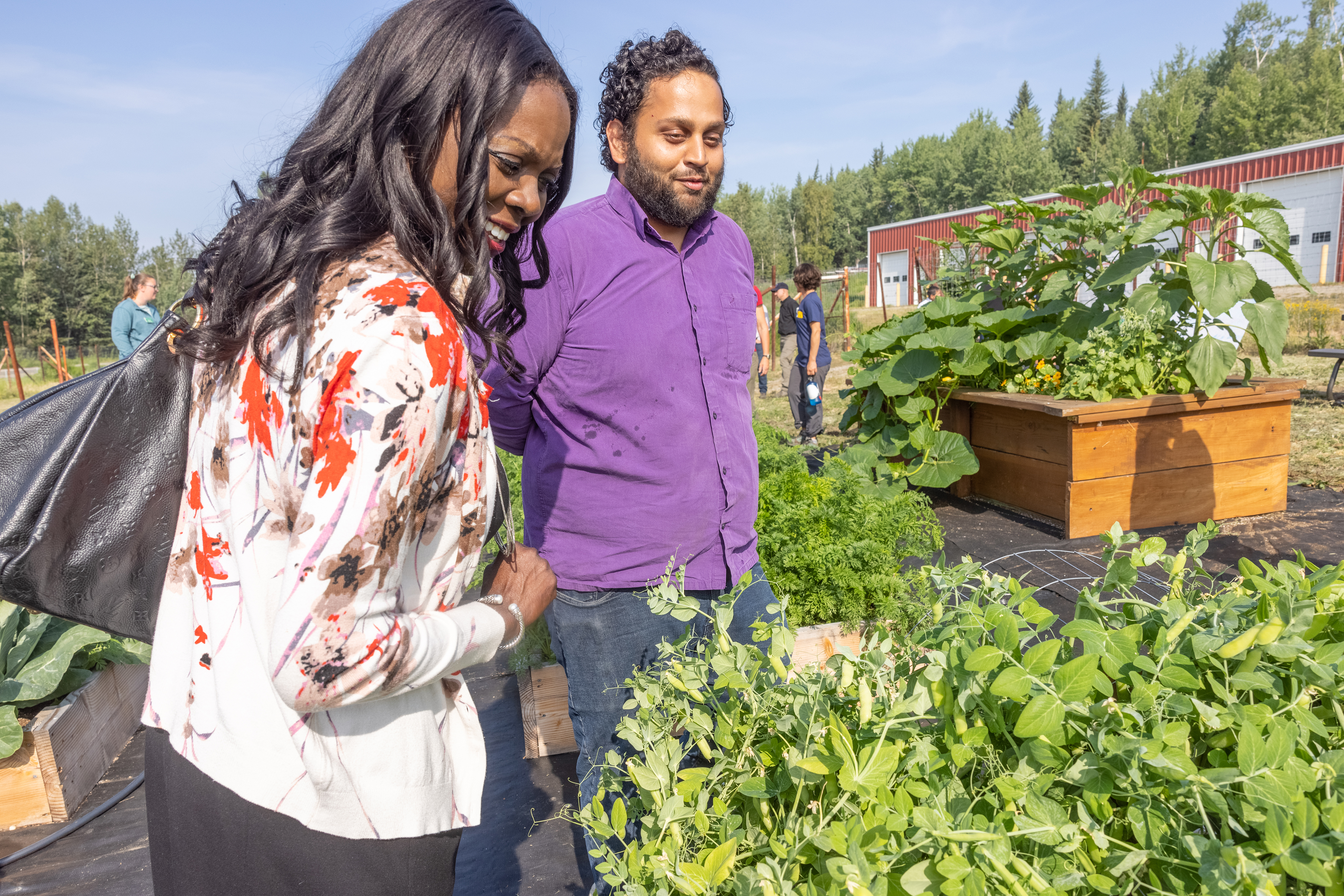$1 million USDA investment supports food, energy sovereignty
Marmian Grimes
907-474-7902
Aug. 3, 2023

USDA Chief Scientist and Undersecretary for Research, Education and Economics Chavonda Jacobs-Young looks at plants at the Nanook Grown garden on the University of Alaska Fairbanks Troth Yeddha' Campus on Thursday, Aug. 3.
A $1 million grant from the U.S. Department of Agriculture will provide continued support for a University of Alaska Fairbanks project aimed at educating and preparing the next generation of Alaska Native agriculture leaders.
USDA Chief Scientist and Undersecretary for Research, Education and Economics Chavonda Jacobs-Young announced the investment during a visit to the UAF Troth Yeddha’ Campus in Fairbanks today.
The funding is part of the USDA’s National Institute of Food and Agriculture’s Alaska Native-serving and Native Hawaiian-serving Institutions Education Competitive Grants Program. It will support Drumbeats Alaska: Place-Based Solutions for Alaska Native Food and Energy Sovereignty, a project led by UAF’s College of Rural and Community Development since 2005.
The Drumbeats Alaska project includes partners at UAF’s rural campuses: the Bristol Bay Campus in Dillingham, Chukchi Campus in Kotzebue, Interior Alaska Campus in Fairbanks, Kuskokwim Campus in Bethel, and Northwest Campus in Nome. The five campuses are strategically located in regional transportation hubs and provide educational opportunities to serve Alaska Native and rural residents across over 166 Alaska Native communities.
The USDA investment will provide education to continue customary traditions of self-sustaining food production throughout Alaska through stewardship in the management of land, game and fisheries.
NIFA gives priority funding to projects that enhance educational equity for underrepresented students; strengthen institutional educational capacities; prepare students for careers related to the food, agricultural, and natural resource systems of the United States; and maximize development and use of resources to improve food and agricultural sciences teaching programs.
“These investments are part of USDA’s ongoing commitment to ensure there’s a diverse and bright pipeline for the next generation of scientists and all ag professionals,” said Jacobs-Young. “The impact of this research goes far beyond the laboratory walls. It supports underserved communities in Alaska and Hawaii, underscoring USDA’s ongoing commitment to enhancing equity across our mission and programs.”
During her visit to Fairbanks, Jacobs-Young visited a UAF Farmer Training Garden, Georgeson Botanical Garden and Effie Kokrine Charter School, where she met with secondary students who built an indoor hydroponic growing farm at their school to benefit the community using USDA funding. She also met with UAF leadership to discuss USDA’s investments in UAF and the importance of supporting educational opportunities and building a pipeline for Alaska youth in agriculture and natural resources fields. She ended her visit with a stop at the Tanana Valley State Fairgrounds to meet with local youth and UAF Cooperative Extension Service staff to learn more about the impact of 4-H on their careers.


